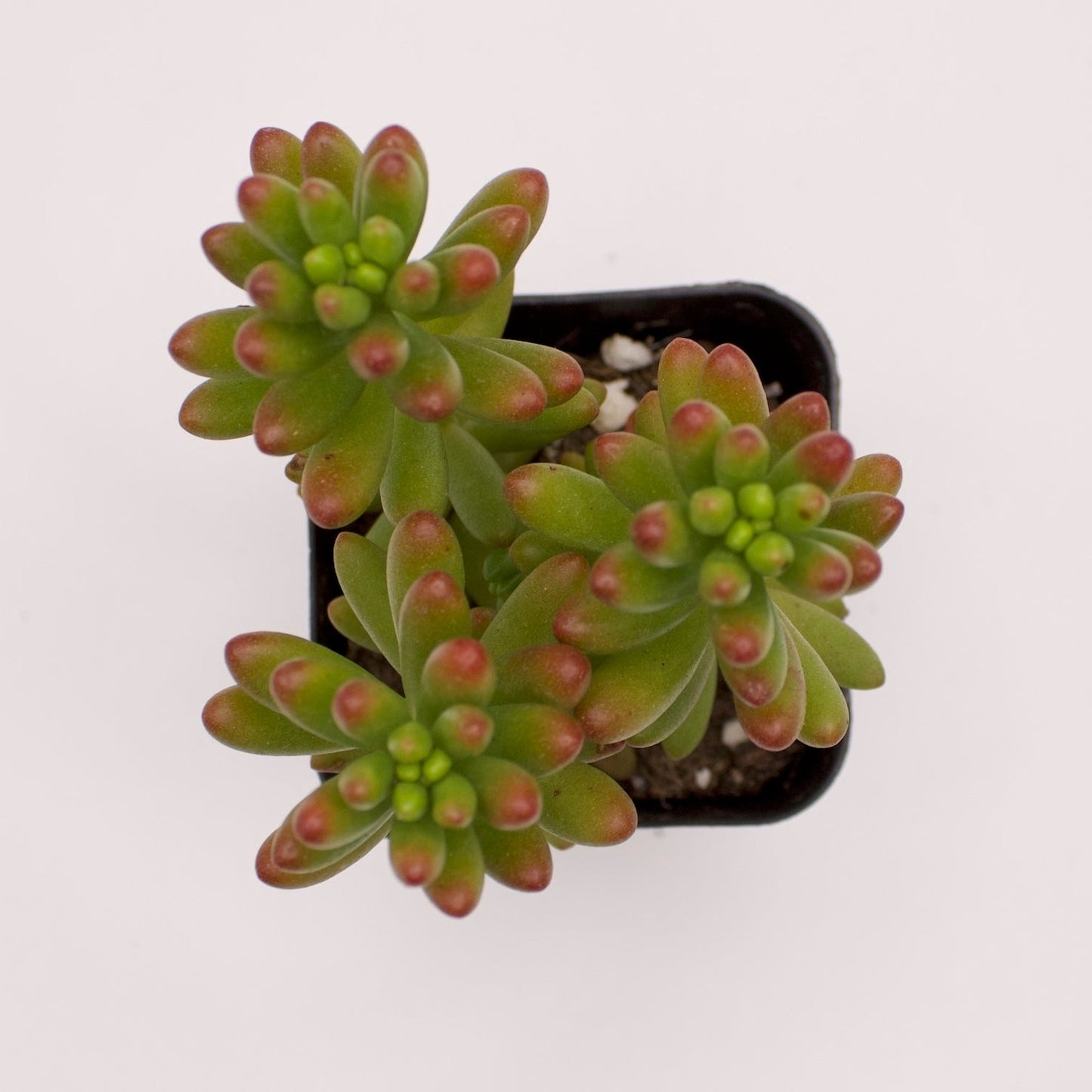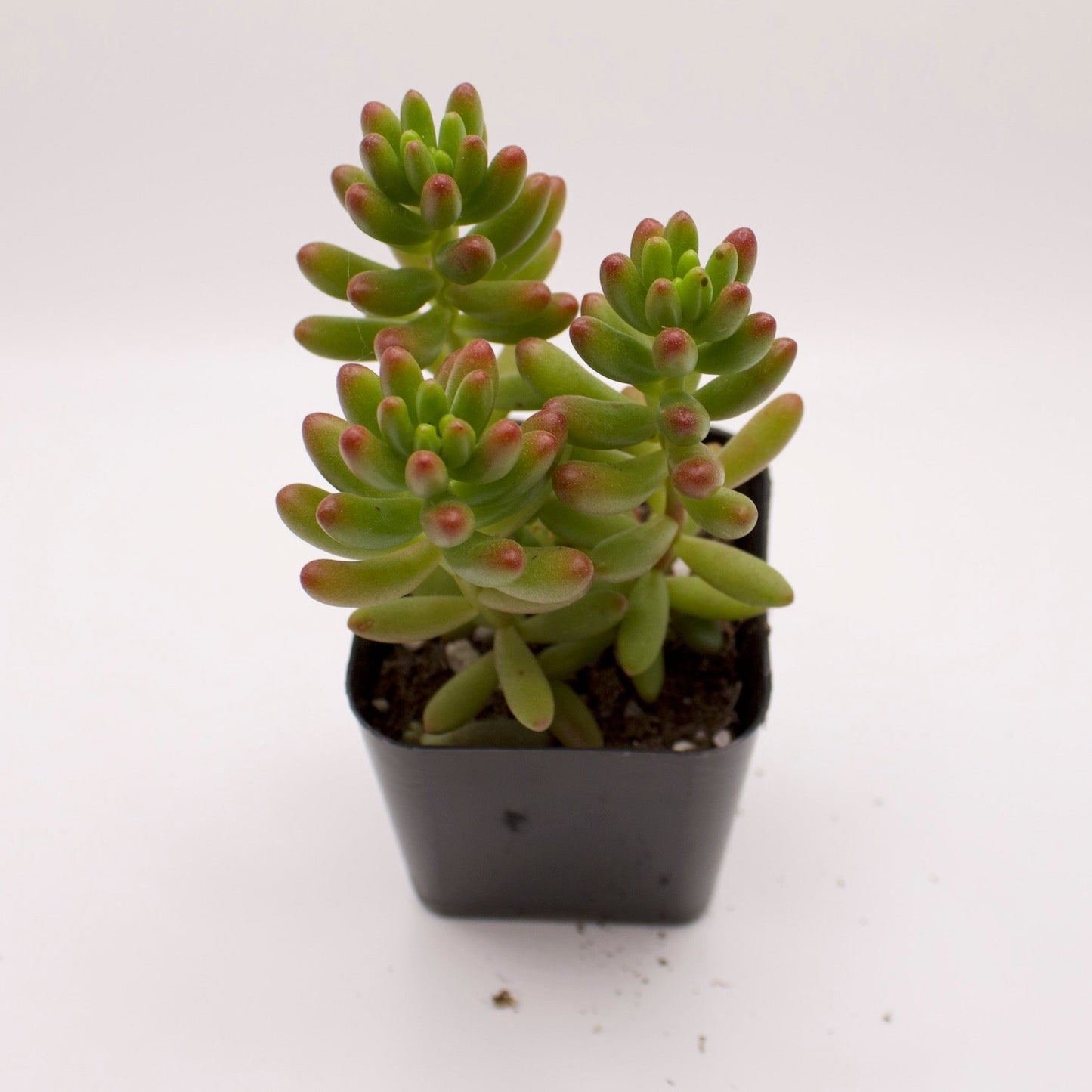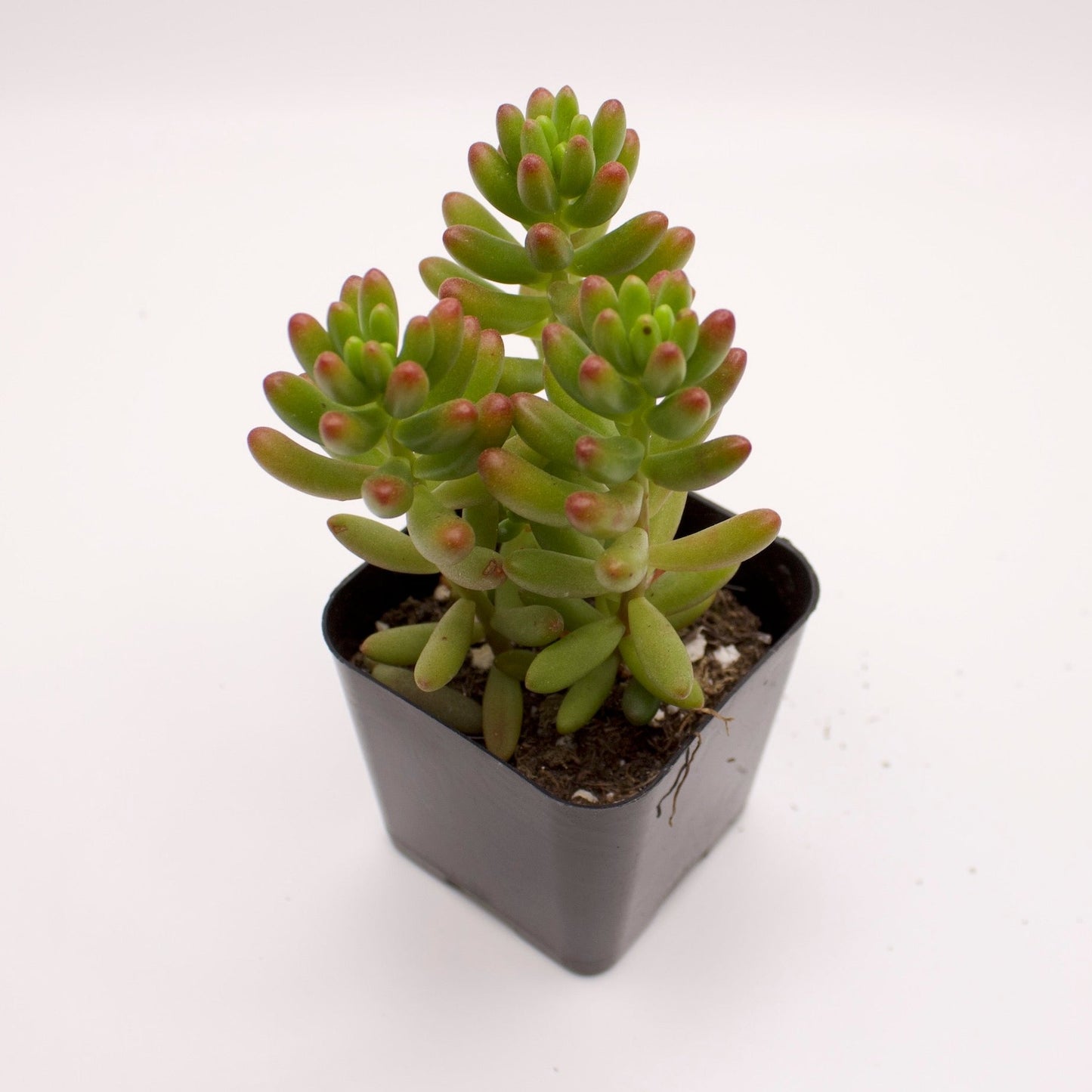Sedum Pork n Beans
Sedum Pork n Beans
Couldn't load pickup availability
- Plant Description
- Specifications and Regions
- Watering and Light Recommendations:
Introducing Sedum Pork n Beans, a beloved succulent from Mexico. It has round, thick leaves that grow up its stem. The color ranges from green to red, especially when it gets lots of sunlight. It adds a pop of color to potted arrangements.
- Native to: North America
- Hardiness: Tender soft succulent, susceptible to frost
- Zone: Suitable for zones 7-10
- Recommended light conditions: Partial Sun
- Bloomtime: Summer
Indoors: Instead of providing your succulents with small amounts of water throughout the week, it is advisable to thoroughly soak the soil until water drains from the pot's drainage holes. Ensure that any excess water in the saucer is discarded, as succulents prefer not to sit in water. Allow the soil to completely dry out before watering again.
Outdoors: During the summer, water your succulents every two weeks by giving them a deep soak and allowing the soil to dry before watering again. In the winter, watering once a month is sufficient.
Plant Description
Introducing Sedum Pork n Beans, a beloved succulent from Mexico. It has round, thick leaves that grow up its stem. The color ranges from green to red, especially when it gets lots of sunlight. It adds a pop of color to potted arrangements.
Specifications and Regions
- Native to: North America
- Hardiness: Tender soft succulent, susceptible to frost
- Zone: Suitable for zones 7-10
- Recommended light conditions: Partial Sun
- Bloomtime: Summer
Watering and Light Recommendations:
Indoors: Instead of providing your succulents with small amounts of water throughout the week, it is advisable to thoroughly soak the soil until water drains from the pot's drainage holes. Ensure that any excess water in the saucer is discarded, as succulents prefer not to sit in water. Allow the soil to completely dry out before watering again.
Outdoors: During the summer, water your succulents every two weeks by giving them a deep soak and allowing the soil to dry before watering again. In the winter, watering once a month is sufficient.
Share






